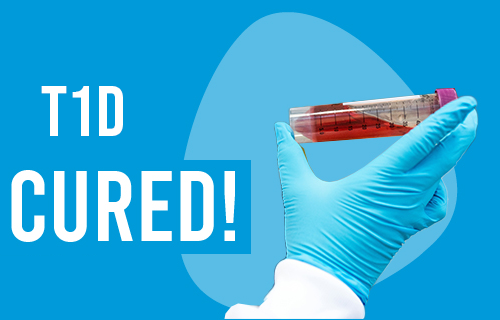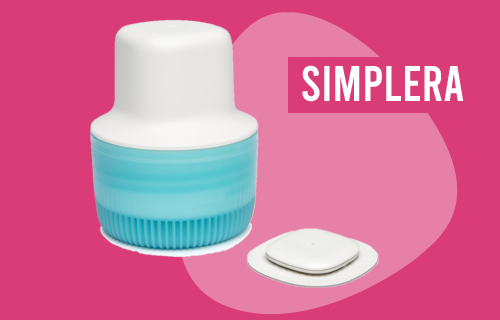What’s New in 2025?
2025 is just getting started, and it’s going to be a big year for diabetes tech! Diabetes technology improves the quality of life of millions of diabetics around the world, and every year it’s improving. With advancements like hybrid closed-loop pumps and 365-day CGM sensors, we’ve come a long way since the days of finger sticks and daily injections.
This year, we’re excited to see improvements in continuous glucose monitoring technology. CGMs are one of the most helpful tools we use as diabetics to keep us safe and healthy. Companies are working to make their CGMs more reliable and less invasive. In 2025, we’re expecting to see a lot of progress in CGM technology, with several companies lined up to release new devices and make their tech available in more countries.
So what new developments can we expect in CGM tech in 2025? Here’s a roundup of everything lined up for this year!

Dexcom News: More Countries, 15-day Sensor, and More!

Dexcom has been a leader in CGM technology for years, and 2025 will be no different.
In an interview with Drug Delivery Business News, Dexcom’s CEO, Kevin Sayer, discussed the company’s plans for 2025. Dexcom hopes to bring its CGM sensors to more countries around the world this year. “Our [outside the U.S.] opportunities are still really big and we continued our U.S. growth and margin expansion,” he commented in the interview. “2025 is really shaping up to be a good year for us.”
The company has also submitted a 15-day sensor to the FDA for review, which Sayer hopes will be approved this year. Currently the company’s G7 sensor sessions last only ten days, so a 15-day sensor would be a welcome change for dexcom users.
In other Dexcom news, the company recently partnered with Oura Ring, a smart ring company that tracks sleep and several other biometrics to help users improve their health. Expect to see a collaboration between the two companies at some point this year that could allow you to combine your Dexcom’s data with Oura’s biometric data.
Dexcom is also working on its next generation CGM sensors, which promise to be smaller, cheaper, and use better electronics. The sensors likely won’t be available for a couple more years, but stay tuned for updates from Dexcom’s website.
Abbott News: Continuous Glucose-Ketone Monitor

Abbott’s Freestyle Libre sensors received an update in 2024. The original Freestyle Libre 2 and 3 sensors are being phased out this year and are replaced by the Freestyle Libre 2 Plus and Freestyle Libre 3 Plus. The sensors are similar to the originals, but now have a 15-day sensor session and are approved for use with insulin pumps as a hybrid closed-loop system. Currently, the Libre 2 Plus is compatible with the Omnipod 5 and the Tandem t:slim X2 insulin pump, and the Libre 3 Plus is compatible with the iLet Bionic Pancreas. 2025 could bring compatibility with more insulin pumps, so be sure to check the Abbott newsroom for updates!
Back in 2022, Abbot announced that they were working on a CGM that monitors both blood glucose levels and ketone levels. This innovative approach to diabetes care is designed to help diabetics avoid diabetic ketoacidosis by alerting the user to high ketones.
The company hasn’t released any recent updates on the progress of this technology, but we hope to find out new details in 2025!
Medtronic News: MiniMed 780G with Simplera Sync

The Simplera CGM was approved by the FDA last year and is Medtronics latest CGM. It’s their first disposable all-in-one sensor, with a wear time of seven days. It’s designed to work with Medtronic’s InPen smart insulin pens. The Simplera Sync, which is the version of the sensor that works with the Medtronic 780g pump for automatic insulin dosing, has not been cleared by the FDA yet. Expect more updates on the sensor’s roll-out and the pump integration for US users soon.
Medtronic also recently made a deal with Abbott to bring their CGM technology to the Medtronic automated insulin delivery system. While the details haven’t been revealed, Medtronic pump users could soon benefit from sensors with longer session times and high accuracy similar to Abbot’s current Freestyle Libre sensors. Expect more updates to come throughout the year on this partnership and perhaps an announcement on when the new Abbot sensors will be available for Medtronic users.
Senseonics News: Long-Term CGM and Insulin Pump Integration

Could we get a hybrid closed-loop system with a long-term CGM? Hopes are high that Senseonic could partner with an insulin pump company to integrate their 365-day CGM with an insulin pump.
Senseonic’s Eversense 365 sensor launched last year, and as the name describes, is the first CGM that lasts for a whole year. It eliminates the need to change a sensor every couple of weeks or deal with sensor failures at inconvenient times. Instead, a healthcare provider inserts the sensor below your skin, and a removable transmitter is adhered to the skin, which sends the data to your smartphone.
The Eversense 365 was approved as an integrated CGM system, which means that it can be used with insulin pumps as part of an automated insulin delivery system. No announcements have been made, but it’s expected that Senseonic will partner with an insulin pump company in the near future.
Roche Predictive AI Technology

Artificial intelligence is quickly becoming an essential feature of CGMs, and Roche’s new system, the Accu-Chek Smartguide, is a prime example.
The Smartguide was designed to give diabetics peace of mind and help them to avoid hypoglycemia, especially at night. The AI technology predicts the users risk of developing a low and what their blood sugar will be over the next two hours.
The CGM system received a CE mark last year, and is being rolled out in Germany, Switzerland, and the Netherlands.
Glucotrack’s Long-term CGM

Long-term CGMs are here to stay, so don’t be surprised to see new options popping up! Glucotrack is in the process of developing a new long-term CGM that lasts for up to three years. The device is different from other CGMs that measure blood glucose in interstitial fluid. Instead, it’s implanted in a vein to measure glucose levels directly from the blood. The sensor would need to be placed by a healthcare provider, but won’t require an external transmitter device worn on the body.
Glucotrack recently completed it’s first human clinical trial of the CGM successfully. Expect to hear more from Glucotrack throughout 2025, and check their website for updates.
Cardiff University and GlucoRx BioXensor
GlucoRx and Cardiff University are in the process of bringing the world’s first non-invasive CGM to the market. Will it get approved in 2025?
The GlucoRx BioXensor is still pending CE and FDA approval, but we’re getting closer to a painless CGM experience. The BioXensor uses radio frequency to measure blood glucose levels needle-free. The sensor will also show biometrics like heart rate, respiration rate, temperature, and more.
We hope to see progress this year in bringing this sensor to the market. You can stay up-to-date on the latest developments over at the BioXensor website.

2025 is on track to be another incredible year for new CGM technology. These advances help type 1 diabetics to have more freedom and peace of mind by making diabetes management easier and less painful. CGMs will undoubtedly continue to be essential devices for both type 1 and type 2 diabetics, and we love to see them become more accessible for everyone.
Do you use a CGM? We know CGMs have made a world of difference in diabetes management for many of you! We’d love to hear your stories and your ideas for future CGM innovations > Instagram!
Professional Content Writer | LinkedIn | haleighsparks.com
Haleigh has had type 1 diabetes since 2002 and is passionate about the diabetes community and emerging management technologies. She hopes her writing can help and inspire other type 1 diabetics to live their best lives. When she’s not writing, she loves hanging out with her rescue dog, trying new recipes, and traveling the world.

